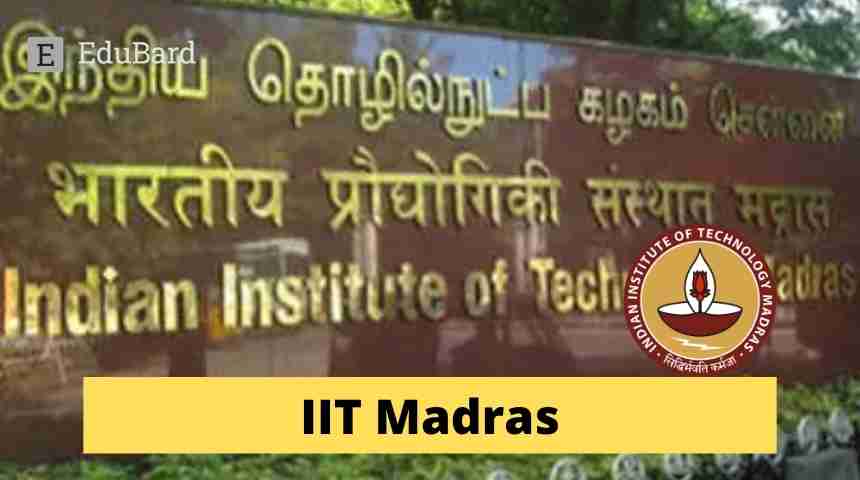IIT Madras | FREE Course on Patent Law for Engineers and Scientists

Overview
- IIT Madras has announced the online course on Patent Law for Engineers and Scientists by the SWAYAM Portal.
- This is a 12 week-long course and will start from the 26th July 2021.
- This is an Undergraduate/Postgraduate course, completely free, but you need to pay the desire fee (1000apx) for the certificate.
Objective:
- The course shall give an in-depth understanding of jurisprudence to engineers and scientists.
- This course will help a person with a science background to understand the fundamentals of patent law, know the requirements of patentability, learn how to read and interpret patent specifications, analyze Patent and Trademark Office Database procedures and lawsuits and develop the essential understanding for drafting a patent specification.
- This course will cover the syllabus of Paper 1 of the Patent Agent Examination conducted by the Property Office, Government of India.
Eligibility
The following candidates can apply for this online course by the IIT Madras.
- First and second-year students in degree programs including Engineering and Science degree programs.
Prerequisites
A background degree in Science or Technology is preferable. Students who enroll in this course
Topics
The following topic will be covered in this free course on C++,
-
Introduction to the Indian Patent System Patent Laws as Concepts; Understanding the Patents Act, 1970; Understanding the Patents Rules, 2003; Preliminary Sections; Preliminary Rules; What’s New in the Patents (Amendment) Rules, 2016; Easy way to read the Patents Act and Rules
-
Patentability of Inventions Statutory Exceptions to Patentability; Novelty and Anticipation; Inventive Step; Capable of Industrial Application; Person Skilled in the Art
-
Patent Specification Provisional and Complete Specifications; Structure of a Patent Specification—Title, Abstract, Description, Claims, etc.; Reading a Patent Specification—Fair basis, Enabling Disclosure, Definiteness, Priority; Introduction to Patent Drafting.
-
Patent Prosecution: Patent Applications Patent Application—Who Can Apply, True and First Inventor, How to Make a Patent Application, What to include in a Patent Application, Types of Patent Applications, Patents of Addition, Dating of Application;
-
Patent Prosecution: Publication and Examination - I Publication of Application; Request for Examination; Examination of Application—First Examination Report
-
Patent Prosecution: Publication and Examination – II Expedited Examination of Application; Search for Anticipation—Procedure, withdrawal of Application; Consideration of Report of Examiner